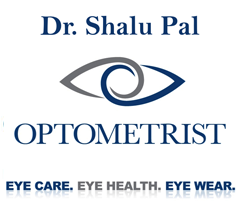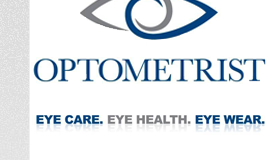Contents |
Dry Eye Symptoms: Introduction
There are multiple causes behind the symptoms, so finding the specific cause and the best treatment is not as straightforward as it may seem. Also, the term “dry eyes” may actually be one symptom of other conditions, such as Sjogren’s Syndrome, Meibomian Gland Dysfunction, or, simply Dry Eye Syndrome. Dry eyes may be one aspect of a long-term medical issue, be caused by certain medications or result from short-term disruption of the ocular tissue, such as that seen after LASIK surgery.
Because the three “official” diagnoses listed in bold above are not very helpful to understanding, we will refer to the complex interaction of tear quantity, quality and causes as Dry Eye Symptoms, (DES) because this term encompasses all types of tear quality or quantity issues.
Dry eyes can be caused by allergies, medications, inflammatory diseases or even simply aging. Women are affected more often than men, particularly in older populations. Dry eye symptoms should not be regarded as “just one of those things” we have to put up with as we age, because dry eyes are not just uncomfortable but can cause real, long-term damage to the eye. Early diagnosis and treatment help prevent this and have the added benefit of decreasing the often significant discomfort caused by it.
Regardless of underlying cause, symptoms of dry eye include increasing discomfort, worse either in the morning or the evening; excess tearing caused by irritation of ocular tissues; burning; stinging; redness; thick or stringy discharge and moderate to severe blurred vision. In addition, the eyelids may become red and swollen, causing problems with the eyelashes.
Because it is rare for a patient to buy exactly the right lubricating drop at random from the large array of those available in most pharmacies or supermarkets, it is important to consult an eyecare practitioner for guidance in treatment modalities. To treat dry eyes successfully, it is first necessary to determine the exact cause of the problem; in general, there are three main categories that cause dry eye symptoms:
- Inadequate tear production, usually from inflammation
- Tears evaporating too quickly from the ocular surfaces
- Imbalance between the three main components of tear layers
Composition of Normal Tears
To understand dry eye symptoms, knowledge of what is normal about the tears is helpful.
Human tears are made up of three major layers. First there is the mucin layer, which helps the tears stick to the eye. This layer makes up about 5% of the total tears. If there is either not enough or too much mucin, or if it doesn’t have the right consistency, the tears will not stay smoothly spread over the ocular surface but will tend to “bead up” on the surface, in a similar way that water might bead up on the surface of a clean, waxed car.
The aqueous layer, composed of water with a small amount of salt and other substances dissolved in it is next. This layer makes up about 90% of the total amount of the tears. If there are not enough tears, by evaporation or inadequate production, symptoms appear.
The remaining 5% of the tears is a thin layer of lipids, which helps prevent the tears from evaporating away too quickly. This layer is somewhat like a thin sheet of oil on top of the water; if there is not enough of a lipid layer, the tears disappear too quickly and dry eye symptoms result.
The main lacrimal glands are located behind the skull bones, above the eyes. These glands are always working to provide most of the aqueous layer; they go into high gear when there is a foreign object in the eye, irritation from foreign substances, or emotional upset.
Part of the aqueous and all of the remaining parts of the tear layer come from numerous glands located in both the upper and lower eyelids, which have openings along the lid margins, just inside the line of eyelashes. Called meibomian glands, these provide both the mucin and the lipid layers of the tears.
When all of these parts are functioning properly, there are adequate tears which stay on the eye without evaporating and which don’t want to “bead up” on the ocular surface. In other words, lucky patients without imbalances or improper consistencies of these have clear, comfortable vision, without dry eye symptoms. Each blink renews the tear film, spreading the tears smoothly over the surface of the eye.
The most important thing for patients suffering from dry eye symptoms is to know that they are treatments available to help.
Testing and Observation
Only your eyecare practitioner can properly observe and diagnose the type of DES that may be present; this is because only eyecare practitioners have the proper instruments for observation or the tools for proper testing to determine the state of the ocular tissues and the effectiveness of treatment.
Testing for dry eyes may include using various stains dropped into the eyes, which mix with the tears and make dry spots or areas where damage is occurring much more visible. Usually the tears are observed using an optical instrument known as a biomicroscope, commonly called a slit lamp. This instrument has a microscope mounted in such a way that the front of the eyes can be closely examined; it is used extensively in contact lens fitting, as well as evaluating the health of tissues such as the conjunctiva and cornea, as well as the eyelids and eyelashes.
The quantity of tears may be tested using what is known as the Schirmer Tear Test, which consists of small strips of absorbent paper, folded over at one end and inserted into the lower eyelid; the length of the paper that is wet by the tears over a specific time is measured. A Schirmer test that results in less than 5 mm of wetting by the tears, for example, indicates a relatively severe lack of enough tear quantity.
There is some difference of opinion concerning Schirmer testing, because it usually does cause a foreign body sensation in the eye if used without topical numbing drops, which can result in a false negative test. If topical anesthetic is used, some practitioners feel that the liquid of that drop added to the tears can also skew the results.
Another test for ocular dryness is called Zone Quick, which works on the same principle, but which uses a folded thread, rather than a strip of paper. The thread changes color as it is wetted by the tears, and there seems to be much less foreign-body sensation experienced by the patient, even without anesthetic. The length of the thread that has been wetted is measured, giving the doctor an idea of the amount of tears present, like the Schirmer test.
Various stains can be mixed with the tears to make any dry spots or damaged tissue much more visible; it is also possible to find out if the aqueous is evaporating too quickly. Called the tear breakup time, this is analogous to watching water evaporate off a concrete surface on a hot day, or beading up on a newly waxed car.
Information gathered from these and other tests, as well as a careful history of symptoms will allow the eyecare practitioner to make an accurate assessment of the cause and best treatment for an individual patient suffering from DES.
Treatments
Dry Eye Symptoms can be caused by a combination of problems, but can also be treated with more than one therapy.
Most eyecare practitioners will initiate treatment right away to improve comfort, but there are also common-sense things that patients can do to help. Helpful strategies include these tips:
- Take “Blink Breaks” every 20 minutes or so when using your computer. Close your eyes and blink several times to spread the tear film over the eye.
- Avoid wind and drafts, as far as possible. Position fans so they do not blow towards the face.
- Avoid low-humidity environments like air-conditioned buildings or being outdoors during cold winter weather.
- Add a humidifier to the home.
- Add omega-3 fatty acids, usually found in some types of fish or nutritional supplements.
- Stay hydrated; drink plenty of water every day.
- Decrease caffeine, found in coffee, tea and many soft drinks, as well as alcohol; all these things cause the body to expel water.
- Avoid dusty and smoky environments.
For more specific information about the different causes and treatments of dry eye symptoms, please see the articles titled Dry Eye Symptoms: Causes and Treatments and Dry Eye Symptoms: Meibomian Gland Dysfunction.







